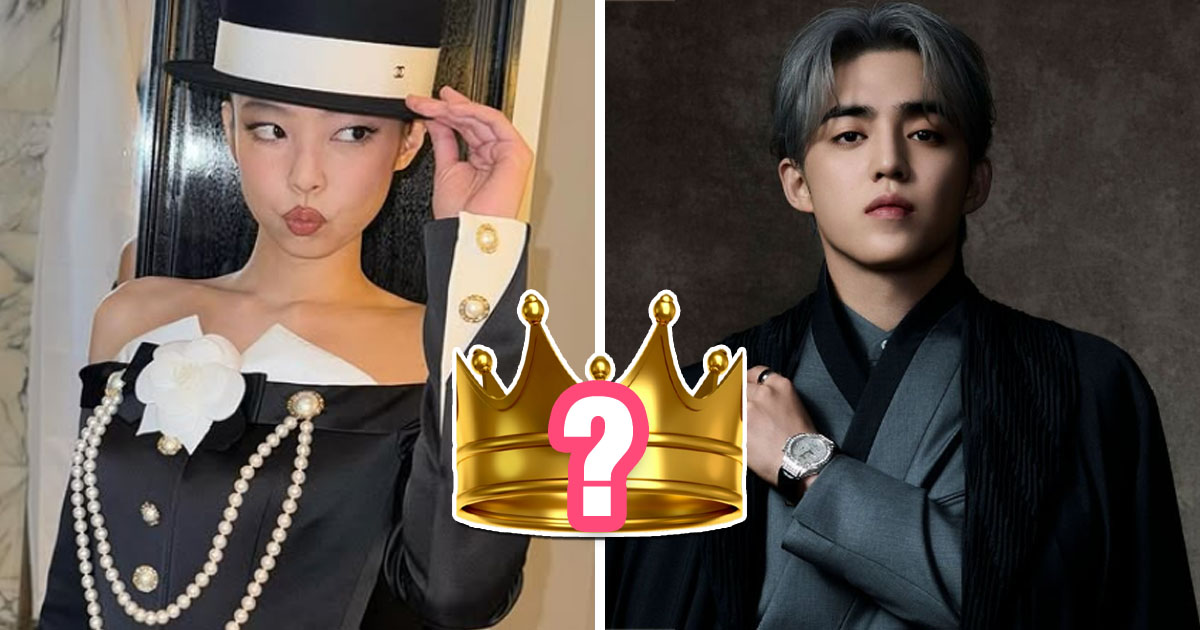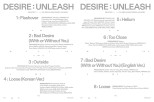It’s time for another episode of the Kpopalypse music theory series! This post is all about advanced scales and modes!

Way back in Episode 5 of this series, I talked about major and minor scales, and how to find a tonal center. During this post I hinted that there were in fact also other scales besides major and minor, but I wasn’t going to talk about them because they were boring and stupid. Well, fast forward a few years and k-pop fans have also become more boring and stupid, so it seems appropriate that I now talk about these other scales!
First up is the concept of modes. Jazz eggheads act likes modes are complicated but they’re actually a very simple concept – just play the same scale but start at a different point, and move that starting point to the key of your song to make it a different tonal center. Easy.
If you’re going “hey Kpopalypse what…” allow me to explain:
Here’s our C major scale:
 Fig.1 C Major scale and tone-semitone pattern
Fig.1 C Major scale and tone-semitone patternAnd here’s our A minor scale:
 Fig.2 A Minor scale and tone-semitone pattern
Fig.2 A Minor scale and tone-semitone patternObviously these are the same notes, so they’re actually the same scale, it’s just that starting at a different point (C or A) gives the notes a different context. However the scale is built up out of seven notes, so there’s not two potential starting points, but seven. Here they are, and the stupid names for them:
 Fig.3 The seven modes of the major/minor scale
Fig.3 The seven modes of the major/minor scaleYou’ll notice that “Ionian” is actually the major scale and “Aeolian” is the natural minor scale. Don’t ask me where these dumb names come from, I have no idea. I have to remember all 24 girls in tripleS, if you think I can remember that plus where I got this information too, think again. The important takeaway here is that now we have five other variations because there’s five other starting points that don’t correlate to major or minor. Easier than remembering 24 variations, right? I’ve linked this insipid fan video below because maybe it’ll help me to remember all the tripleS girls but it probably won’t.
Anyway, unlike the girls of tripleS, each of these seven starting points has a different sound, because if you align the starting points, there are differences in the tone and semitone pattern, which changes the context, and in music context is always key. This results in the following variations.
 Fig.4 Relative tonal relationships of the major/minor scale when the modes all start from the same tonal center
Fig.4 Relative tonal relationships of the major/minor scale when the modes all start from the same tonal centerBut wait! That’s just looking at one possible combination of seven notes, there’s plenty of other ways you can do things. To take the simplest, most “major/minor adjacent” example, anyone who has been trained in the boring art of classical piano knows that they do this thing where they make you practice minor scales with the seventh note not flattened, but only on the way up, and then when you go back down the scale you play it the flattened ‘natural minor/aeolian’ way again. They call this variation “harmonic minor”. Then there’s another version where you play the same scale again with the sixth and seventh notes raised, playing them “major” style when go up the scale, but not on the way down, and they call that the “melodic minor”. So that’s two variations on “Aeolian” which don’t fit into the above diagrams.
 Fig.5 A Harominc Minor scale and tone-semitone pattern (ascending only)
Fig.5 A Harominc Minor scale and tone-semitone pattern (ascending only) Fig.6 A Melodic Minor scale and tone-semitone pattern (ascending only)
Fig.6 A Melodic Minor scale and tone-semitone pattern (ascending only)I know that you’re thinking: “but Kpopalypse, why do the harmonic and melodic minor scales sharpen/unflatten the notes when on the way up, but not on the way down?” I always wondered this too, as when I was taught these scales I wasn’t taught the meaning behind this change, my piano teacher just said “practice the fuckin’ scales you little shit” and made me do them over and over. It was only later when I went to university to complete my formal music education up to postgrad level did I finally figure out the reason for this, and now I’m going to share it with you, so strap in.
Back in episode 16 of this series I talked about the concept of harmonic motion and how in western music theory convention (and the listening biases of anyone raised in such a convention) certain chords tend to want to resolve to certain other chords. In particular there is a very strong motion from the V to the I. This is partly because the V contains the ‘leading tone’ which is the seventh note of the major scale… when played ascending, the ear really ‘wants’ the leading tone to go to the eighth/first note, this is discussed extensively in Epsidoe 16 along with video examples. However the same doesn’t apply to a minor key, because while a major chord is 1-3-5, a minor chord is 1-b3-5. In the fifth position, that makes the major chord 5-7-2 so it has that seventh note in the middle, but the minor chord version becomes 5-b7-2, which means you don’t get that strong ‘leading tone’ effect. As a result, a minor V to I (v-i) is a “less strong” resolution than a major V-I (V-I). To get around this perceived ‘weakness’, cunts with wigs on their heads and syphillus 250 years ago started using the major V chord even in minor-key songs, so you’d end up with the progression V-i, and the melodies would follow this harmonic movement (because melody and harmony is actually the same thing, as discussed in episode 14) which means that you’d be playing a sharpened “wrong note” whenever you hit the V to make it sound more satisfying when it went back to the I. Hence the name “harmonic minor” scale, because it was there to make the harmonic movement more satisfying. However what it did was it also messed up the melody a bit because you’d have this tone-and a half jump (you can see it where TS is marked in Fig.5 above) which felt a bit jerky and “unmelodic” to the ears of these anal-fungus-sniffing frilly-pants-wearing boffins, so they invented a “melodic minor” scale which did the same trickery to the iv chord, changing it to major (the minor 4-b6-1 becomes the major 4-6-1) so they could get a nice IV-V-i movement going with no tone-and-a-half jumps.
Now since both of these scales in their ascending form are also seven note scales, guess what that means? That’s right, each scale has seven “modal” variants and thus seven stupid names.
 Fig.7 Harmonic Minor and Melodic Minor scale modal names and tone-semitone patterns
Fig.7 Harmonic Minor and Melodic Minor scale modal names and tone-semitone patternsOf course there’s no reason to stop here, so let’s keep going. There’s also five-note or pentatonic scales, which are more favoured by traditional non-western music.
 Fig.8 C Major Pentatonic scale and tone-semitone pattern
Fig.8 C Major Pentatonic scale and tone-semitone pattern…and of course this has five modes.
 Fig.9 Major pentatonic scale modal names and tone-semitone patterns
Fig.9 Major pentatonic scale modal names and tone-semitone patternsBut that’s not the only pentatonic scale type either. Just one example; swing-jazz players don’t tend to use the regular minor pentatonic that’s a “modal version” of the major pentatonic, but instead flatten the third note (the third) and the fifth note (the sixth), so instead of having this:
 Fig.9 A Minor Pentatonic scale and tone-semitone pattern
Fig.9 A Minor Pentatonic scale and tone-semitone patternYou end up with this:
 Fig.10 A Minor swing-jazz scale and tone-semitone pattern
Fig.10 A Minor swing-jazz scale and tone-semitone patternThen there’s five versions of that, of course. I won’t list them, surely you get the idea by now. Note that swing-jazz doesn’t strictly stick to these five notes as they use a lot of chromatic stylistic elements as well as throwing in elements of the blues scale, which is this:
 Fig.11 A blues scale and tone-semitone pattern
Fig.11 A blues scale and tone-semitone patternIt’s no secret that k-pop music like all other popular music tends to borrow from the blues a fair bit, and the blues actually has its own scale too which adds an extra note to the minor pentatonic pattern, so now we have a six note scale:
Note there’s some ambiguity here due to blues (which has influence of both African slave music and western folk music) not playing strictly by the western tonal system. The asterisk denotes that the b3 note (C in this example) is often sung a little sharp, or played sharp on instruments that allow it. For instance a guitarist playing that note in a blues context will sometimes play it sharp to reflect the fact that vocalists often also sing it sharp. Often not sharp enough to qualify as the next semitone up, but somewhere in between, a “quarter tone”. However this isn’t true in all instances either. Same with the b5 (D# in this example) which is sometimes played directly but is just as often “glided to” in practice on instruments which have a note-bending facility, once again to mimic the way that singers will slide between notes in this style.
This is not a complete list of scales, just the most common ones that you might encounter in k-pop music. From most common to not-at-all common:
- Major and minor
- Blues and other pentatonics
- Other diatonic modes of major/minor
- Anything else not covered here (bebop scales, whole tone scales, stuff from other cultures that generally doesn’t find its way into k-pop etc)
Let’s now explore the sound of these scales and modes, with k-pop examples!
Of course you’re wondering what scale Fifty Fifty’s “Starry Night” uses, right? It uses the major scale!
Chuu’s “Strawberry Rush” is also a very major scale type of song. Major scales are common for upbeat pop songs in general.
Chungha’s “I’m Ready” is a minor key song, which gives it a darker sound which is fairly easily identifiable.
Illit’s “Cherish My Love” is a minor key song with a softer, sadder tone. They make use of the harmonic minor ascending turnaround technique talked about above where they substitute the major tonality for the minor one, you can hear this happen at the end of the verse passages, such as 0:50.
Minor doesn’t have to be “sad” or “dark” though, a lot depends on the context brought by other elements such as beat, texture and so forth. Shinsadong Tiger wrote most of his best tracks in minor keys, and T-ara’s “Roly Poly” is no exception.
Rose and Bruno Mars’ “APT” is minor scale for the chorus, and blues scale for all the other sections. There’s some ambiguity here as the blues scale and minor scale share much of the same notes, so technically you could say the whole thing is minor, however the strict focus in the verse on only the notes that the minor scale shares with the blues scale, plus the more bluesy singing style in both the vocal melodies and backings in these sections, combine to make the ear hear “blues scale” from the result.
IU’s “Holssi” is major pentatonic through most of its running length, but switches to minor scale for the pre-chorus. In this case, and unlike “APT”, there is a tonal conflict between those two scales (the normal third in the major pentatonic vs the flattened third of the minor scale) so they appear very much separately (0:58 for the high minor third).
But what about the weirder stuff? Note that there aren’t actually very many k-pop examples of the unusual modes that give you a clear listening experience of what that mode actually sounds like in practice, because most k-pop songs that aren’t major or minor don’t actually stick to a mode at all – they instead just borrow notes from whatever. That’s because most k-pop composers actually have no idea, or only a very hazy idea, of the stuff in this post, or even if they do know, they just don’t care, because why would they, there’s no “modal police” to get in trouble with. Pop music composers just find thing A that they think sounds cool and stick it with thing B that they think also sounds cool, and sometimes there’s a theoretical concept behind it, but usually there isn’t. Sometimes it matches up, sometimes not so much.
All the vocal melodies and main riffs for aespa’s “Supernova” are in phryigian mode. There’s a part at 2:15 where they overlay some keyboards doing a minor scale riff, but it doesn’t sound too jarring because the girls are just chanting at that time so there’s no clash between the two melody types. Phrygian mode and its variants are a favourite for k-pop songs going for a moody, angular type of feel.
Kingdom’s “Coup Detat” is also phrygian. This mode is often used in Spanish flamenco guitar pieces, and here Kingdom evoke a similar feel.
Some claim f(x)’s “Rum Pum Pum Pum” is in phrygian as well, but not quite, this song is actually “phrygian #3” or “phrygian major”, which is a mode of the ascending harmonic minor. The raised variant of the phrygian is necessary to make the major scale arpeggio pre-chorus work and not clash with the rest of the melodies.
If you’re wondering what the swing jazz variant of the pentatonic scale sounds like, it’s all over IU’s “Love Of B”, although they don’t stick to it strictly, throwing in blues scale elements, chromatic notes as well as diatonic minor scales. It all fits because the entire style of swing jazz is very chromatic in nature. Watch that poor guitarist struggle from 1:45 onward, I can relate!
If you’ve ever felt that Itzy’s “Gold” sounded a bit messy and “not quite right” but you couldn’t put your finger on exactly why, the following may explain. The song establishes a major key quite early and then later on the backing track adds instruments at 1:00 doing a phrygian type movement. This could have worked well if that same instrumental passage didn’t transpose key later on at 1:25, shifting the phrygian scale to a place where it implies the minor scale instead. The result is a very dense, strange feeling.
2NE1’s “I Am The Best” is “phrygian #3” (Bom’s line at 0:42 establishes the major third after the flattened second is brought in during the intro) but also raises the sixth in the vocals (Dara’s line at 0:55 – something the phrygian scale doesn’t do) but not in the instrumental – note how the last line of the synth feels “wrong” at 2:47, that’s because it’s clashing with what’s already been established. The parts are separated enough for it to all work in context.
Red Velvet’s “Ice Cream Cake” is mostly major but the flattened seventh at 1:12 change the context to mixolydian… but then there is also that main intro riff with the raised 4th and a chromatic movement (that makes it sound oddly like a sped-up k-pop equivalent of Slayer’s “South Of Heaven” opening riff), so who even knows what the fuck is going on. I’m pretty sure the songwriter didn’t even know. It’s entirely possible to overanalyse these things, half of the time nobody knows, it “just sounded cool”. So to prevent overanalysis let me leave you with this:
…because it’s a good way for you to test your listening skills of course. What scale is Jeewon using in this song? See if you can figure it out! Kpopalypse shall return!











![From ‘Vengeance’ to Vulnerability: BIBI’s [EVE] World Tour Hits Singapore This August](https://blogger.googleusercontent.com/img/b/R29vZ2xl/AVvXsEgu57y-LJbNUaS3XxlV7hMm-EZdE1-c7k1JsFyXqTadc2tAIX44zh9wGJjoCkRO2B5l8KGgt26J3c21Z4J-0riLUzS_L_wWZVoy1EH3Mlj8eZcbE9vpc5Zeno9jwTU01bNY_PgO55sVZhibMoGp6e-Z7CCowSRN_n0ldS0HUJ5xUolkhYvBQJDy1Ix7N5ef/w1200-h630-p-k-no-nu/BIBI_1920x1080.jpg)








 English (US) ·
English (US) ·